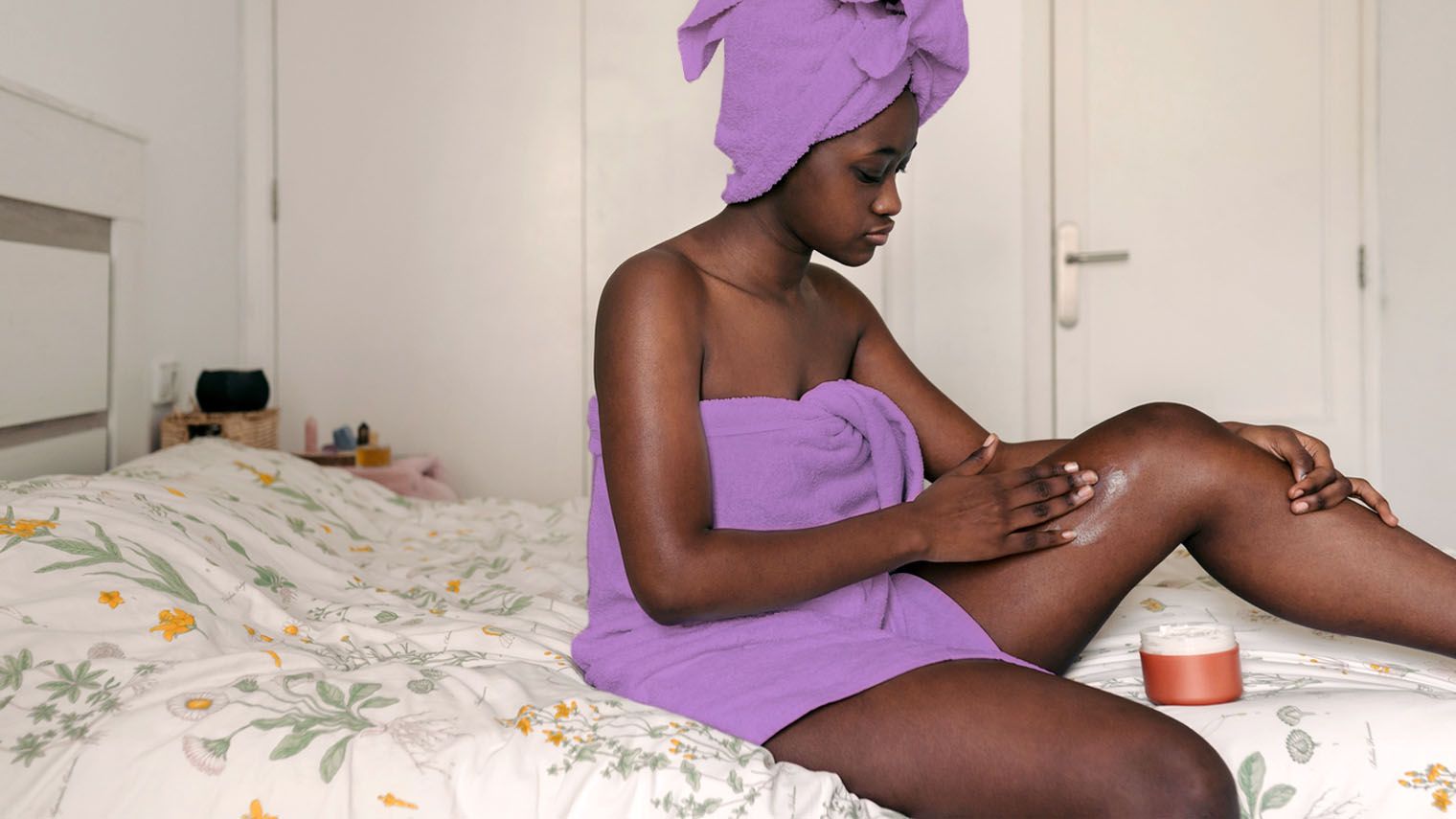Winter Skin Care for Psoriasis: Tips for the Cold Season
October 30, 2024

Photography by Lucas Ottone/Stocksy United
Changes in season can bring on a new set of triggers for your psoriasis. Learn how to protect your skin from colder, dry weather and enjoy a more comfortable winter season.
Winter and cold weather can wreak havoc on your skin — particularly if you’re trying to manage psoriasis.
Cold, dry air can dry out your skin, making you more prone to flares. However, you can take steps to help lessen cold air and winter’s effects on your skin and your symptoms.


1. Manage stress
One of the best things you can do to manage psoriasis — any time of year — is to manage your stress, a common trigger of psoriasis.
During winter and colder weather, taking steps to reduce your stress can help during a time when you might have more trouble keeping your symptoms well managed.
A 2018 review of studies suggests that trying meditation to relieve stress may be helpful in managing psoriasis, especially when used in combination with treatments that target symptoms.
Other tips to manage stress include:
- trying yoga or other exercise routines
- eating a healthy diet
- spending time outside
- avoiding or taking breaks from stressful situations
3. Moisturize your skin
A good skin care routine can elevate your psoriasis treatments to the next level. Moisturizing your skin is an important part of your daily skin care routine that can help keep your skin from drying out.
The American Academy of Dermatology Association (AAD) recommends that you moisturize your skin after using water on your skin for baths, showers, and even washing your hands. This helps lock moisture into your skin, which helps reduce redness and other symptoms associated with psoriasis.
4. Drink more water
Drinking more water and non-caffeinated drinks, in general, can help keep your skin moist. Keeping yourself hydrated also helps flush out toxins, helps keep your joints lubricated, and allows your body to function properly.
In colder weather, you may want to consider hot beverages and hydrating foods like soups. These can help warm you up and comfort you while helping keep you hydrated.
Be careful about drinking excessive amounts of caffeine. Try incorporating decaffeinated teas or coffee and other warm beverages into your day.
5. Manage your showers and baths
While bathing is an important part of self-care, showering smartly can help with managing psoriasis symptoms.
The AAD recommends taking short showers, 5 to 10 minutes, using lukewarm water once a day. During the shower, make sure to use dermatologist-approved skin care products and moisturize after toweling off.
You should avoid hot showers to help prevent aggravating your symptoms. You may even want to consider a cold shower from time to time. This can help alleviate itchy, painful skin.
6. Make some lifestyle changes
In a 2021 study, researchers helped identify several different lifestyle practices and medical conditions in a group of Chinese participants with psoriasis that may increase the risk of flare-ups. Examples include:
- drinking alcohol
- having high blood pressure
- smoking
- living with obesity
- having high cholesterol levels
- living with diabetes
You can take steps to reduce your risk factors by stopping smoking if you smoke, avoiding alcohol, and taking steps to manage any other medical condition you may be living with.
7. Use a humidifier
A humidifier can help add moisture to dry, cold air. You can set one up in different rooms in your house. Depending on where you work, you may be able to set up a humidifier in your work area.
8. Dress for success
Before heading outside for the day, make sure you’re dressed appropriately for the weather. Cover your skin with clothing made with natural fibers to protect it from the cold air.
Also, it’s helpful to consider planning your outdoor activities based on the temperature outside. If you want to take a walk or go for a run, consider planning to run around midday when the temperature is warmest.
If possible, you may want to do workouts inside in temperature-controlled environments.
9. Get vaccinated
According to the National Psoriasis Foundation, anything that aggravates the immune system can trigger a psoriasis flare. This includes common infections, like bronchitis, strep throat, and upper respiratory infections.
Though you can’t prevent all infections, experts recommend considering getting vaccinated against common conditions like COVID-19 and the seasonal flu. The Centers for Disease Control and Prevention (CDC) recommends getting seasonal vaccinations for everyone over age 6 months.
You can take other steps to prevent illness during cold and flu season, which coincides with cold weather. Some tips include:
- avoiding people who are sick
- washing your hands regularly and before eating
- avoiding sharing drinks or food with people who are sick
- avoiding large public gatherings
- sanitizing frequently used surfaces and keep bedding clean
10. Discuss phototherapy with a doctor
Phototherapy is a popular treatment option for psoriasis. You can get treatments in a doctor’s office or use equipment at home.
Before starting, consider talking with your doctor about its potential benefits for you.
Takeaway
Cold weather is another risk factor for psoriasis flares. You may want to take more steps during colder months to help reduce your risk factors.
Several lifestyle changes can help. This includes stopping smoking and reducing alcohol intake as well as avoiding colder times of day, covering your skin, moisturizing regularly, and other steps.
You may also want to consider new treatments, such as phototherapy, to help keep psoriasis well managed.
Hi Bezzy! Would you like to receive a special series of mini-lessons on reducing inflammation in psoriatic arthritis? There's no cost, and it’s easy to sign up here.
Medically reviewed on October 30, 2024
6 Sources


Like the story? React, bookmark, or share below:
Have thoughts or suggestions about this article? Email us at article-feedback@bezzy.com.
About the author